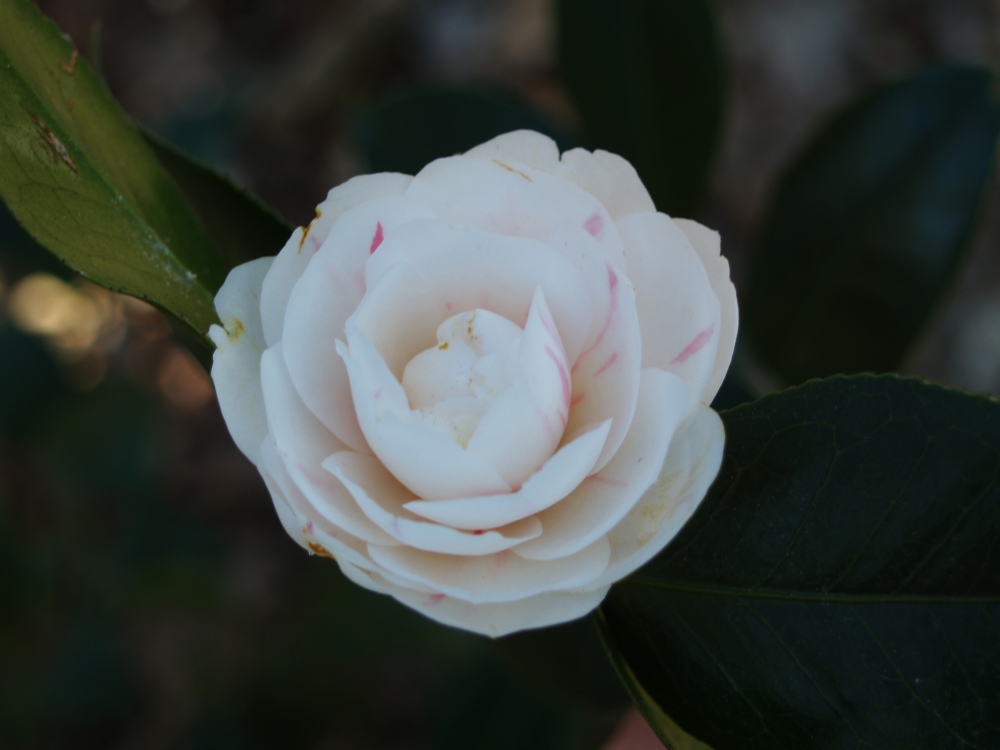After a difficult winter, all buds of spring blooming camellias (Camellia japonica) were damaged, so there were no flowers earlier this year. Besides flower buds, there was little damage to foliage, and since, all have returned to excellent health. I expect no problems next spring unless there is a repeat of prolonged temperatures below zero, which seems unlikely. A few decades ago damage to spring flowering camellias was routine, but more cold hardy varieties and warmer winters have made blooming much more dependable in my northwest Virginia garden.
I suppose that any gardener who is paying attention has noticed on occasion that identical flowering plants can bloom a week or two apart with only slight variations in sun or shade exposure. Today, I see this with two ‘Winter’s Star’ camellias (Camellia x ‘Winter’s Star’, above) that are no more than twenty feet apart, but one receives some late afternoon sun while the other is mostly shaded. In fact, the one in the more open location does not get any direct exposure now that the sun has veered far to the south in early November, but I suspect that brighter light or buds that formed earlier with more direct sunlight have pushed it ahead of the other.
Both camellias are heavily budded, as are other hybrid camellias that typically begin to flower some time in November. In most years, and there is no reason to expect otherwise, the autumn flowering camellias will continue blooming long into December, and often a few scattered buds remain that will flower in a period of a few warm days in January. If there are no warm spells, there will be no flowers with the buds drying on the stem without opening. 
The hybrid ‘Winter’s Interlude’ (above) is more confounding, and less dependable about flowering than ‘Snow Flurry’, ‘Winter’s Snowman’, and ‘Winter’s Star’. Perhaps this is because it is several feet further into the shade, beneath a wide spreading Golden Rain tree and ‘Jane’ magnolia. Of course, the trees and surrounding shrubs have grown considerably since the camellias were first planted, so I excuse myself from blame for this less than ideal positioning. Yes, I understand that it is the gardener’s role to realize that plants grow, and to take this into account, but I insist that there is adequate light and that somehow this is the camellia’s fault, and not mine.

